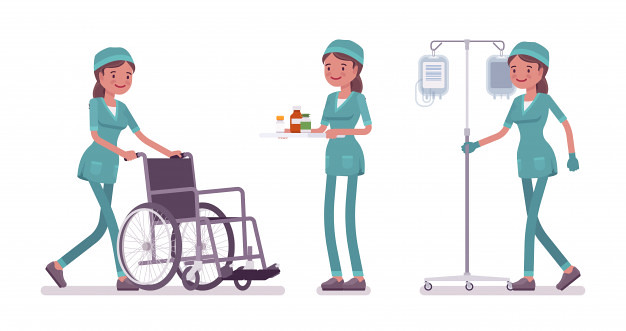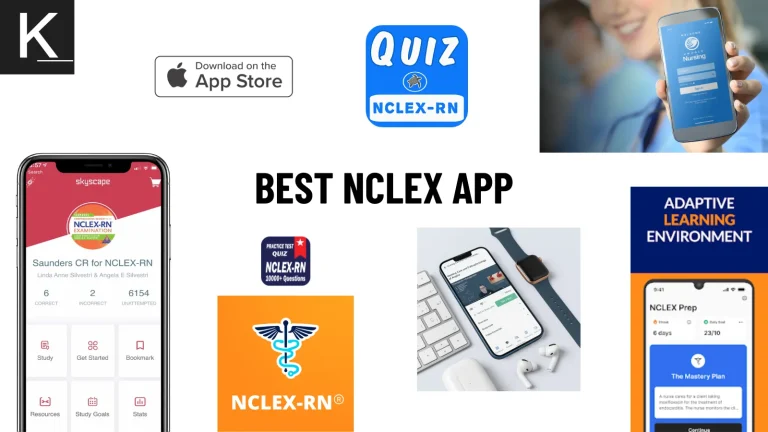NGN NCLEX is the new and improved NCLEX version launched in 2023. If you’re a nursing student getting ready to take this test, you’ll want to know what’s changed, right?
That’s where I come in. I’m here to answer all your questions about this exam and walk you through the new items and score system. So, let’s dive into everything about this updated exam!
What Is The Next Generation NCLEX?
The Next Generation NCLEX (or NGN) was launched in 2023 as an evolution of the traditional NCLEX exam, aiming to elevate the nursing students’ judgment.
Unlike a completely new exam, NGN enhances the existing test structure. This updated approach reflects a commitment to maintaining the highest standards of nursing practice and fostering the development of competent and proficient nursing professionals.
When Does NGN NCLEX Start?

The NGN started on 04/01/2023. This date signifies the full implementation of NGN by the NCSBN, heralding a new era in nursing education and assessment.
From this point onward, all aspiring nurses, irrespective of their graduation day from nursing school, must undertake this exam for licensure.
What’s Changed On The NGN NCLEX?
NGN introduces novel item types, adjusts the exam’s duration, and implements a revamped scoring system to provide a more comprehensive evaluation of candidates’ competencies.
1. Conceptual Changes
The NGN improves patient safety by ensuring new nurses have the skills to make good decisions and provide high-quality care.
Research shows many new nurses struggle with making judgments in real-life situations; this is a big problem because it leads to mistakes, and medical errors are a top cause of death in the US. A report from 2011 found that almost all new nurses make mistakes in patient care.
To fix this, the NGN tests how well nurses can think critically and make decisions. The NCSBN says good judgment comes from using nursing knowledge to understand what’s happening, know what’s most important, and have the best solutions based on evidence.
These changes mean the NGN will ask questions about real-life situations nurses face. Instead of testing if nurses know facts, it will test if they can use that knowledge to solve problems and keep patients safe.
By making these changes, this exam hopes to better prepare new nurses for the challenges they’ll encounter on the job.

2. Scoring System
Unlike the dichotomous method used in the past, where items were simply correct/incorrect, the NGN adopts a polytomous score approach. This new method allows partial credit with certain items.
For instance, if a question has four correct options and a candidate selects 3, they receive 3 points. This system provides a more nuanced assessment of candidates’ abilities.
This exam offers three ways to assign partial credit:
- +/- Scoring
In this method, test takers receive 1 point for each correct response but lose 1 point for each incorrect response. If the score is (-) negative after accounting for incorrect answers, the total score will be zero.
This approach encourages candidates to weigh the risks of guessing against the potential benefits of answering a question correctly.
- 0/1 Scoring
Under this scoring scheme, test takers are awarded 1 point for each correct response, with no penalty for incorrect answers. This method acknowledges that candidates may possess partial knowledge or understanding of a concept.
- Rationale Scoring
This scoring method evaluates test takers’ responses to linked units with an item as a whole rather than individually.
You receive full credit if you correctly address all linked components of an item, while any inaccuracies result in zero credit for that particular item.
This approach emphasizes the importance of comprehensive understanding and application of concepts rather than isolated knowledge.
3. Item Types

This exam includes these new question types:
- Extended drag-drop: You’ll match items from two lists, like pairing symptoms with the patient rooms, to check the ability to prioritize tasks.
- Drop down (Cloze): You’ll read a story about a patient and pick up to six correct responses for their care. This type shows if you understand complex situations and can suggest the right actions.
- Matrix grid: You’ll read a scenario and mark boxes in a chart to show your decisions based on the information given; this tests your ability to analyze and make choices based on data.
- Hot spot: You’ll highlight parts of a story to answer; this checks if you can find important details and use them to solve problems.
- Standalone items: These questions use information from patient records. They start with simple recognition and analysis and progress to making judgments and evaluating patient responses.
These new questions mirror nursing tasks, testing nurses in judgment, critical thinking, and decision-making.
While it’s expected that nurses have basic medical knowledge, these questions focus more on how you apply that knowledge in practical situations.
4. Exam Length
The length of the exam is from 85 to 150 questions.
The min-length exam has 85 questions, including 70 scored & 15 unscored ones. You’ll face 52 standalone questions and 3 case studies, each with six questions. You might also get up to 2 more unscored cases for practice.
After the shortest exam, you’ll have a chance of getting a judgment question (about 10%). This question tests how well candidates can make important decisions in real nursing situations. It’s mixed in with the regular questions.
The max-length exam has 150 questions, including 135 scored & 15 unscored ones. The exam adjusts the question difficulty based on your performance. This way, you’ll get a test that fits your skills.
So, the GN exam length is to give a fair evaluation of candidates without making the test too long or difficult. It mixes different question types to see if candidates are ready for practice.
What Does Not Change About The NGN NCLEX?

- Time allowed
Despite updated item types, the time allotted for the exam remains the same as the previous format. You still have up to 5 hours to complete the test. So you can manage your time effectively and complete the exam without feeling rushed.
- Delivery method
The exam continues to be administered as a variable-length CAT. So, you’ll receive questions tailored to your ability levels. Additionally, case studies are delivered within this model.
- Performance Report (CPR)
You’ll still receive your performance report after taking the exam as valuable feedback. However, there are slight changes in the report’s content, depending on whether you passed.
If you did not pass the exam, the CPR will include a new part focusing on clinical performance. This detailed feedback will help you identify areas for improvement and better prepare for future attempts at the exam.
Why Does The NCLEX Change?
The reason is simple:
There’s a need to test nurses on their ability to make good decisions in real-life situations.
Traditional tests like the old version of the NCLEX are not good enough at measuring this skill. That’s why the NGN was introduced: to ensure that new nurses are ready to handle the complexity.
An NCSBN study in 2014 found that nursing practice requires higher levels of skill and knowledge than before.
With healthcare becoming more complex due to technology and patients having more illnesses, nurses need to be able to make quick decisions to avoid mistakes.
This exam ensures nurses can apply their knowledge effectively in practical situations. This way, nurses will be better prepared to provide safe and high-quality care to their patients.
How To Study For NGN NCLEX?
Studying for this exam requires a strategic approach to developing critical thinking and clinical skills. Here’s my guide on how to study effectively:
- Familiarize yourself with the format and structure of the NGN exam.
- Use high-quality study resources for the NGN. Ensure your resources are updated to reflect the latest NCLEX Test Plans.
- Practice answering NGN-style questions and focus on understanding the rationale behind each answer choice to improve your clinical reasoning skills.
- Seek out case studies and scenarios that require applying nursing knowledge in real-world contexts.
To effectively prepare for the NGN, I recommend utilizing online platforms such as UWorld, Kaplan, and Archer, which offer high-quality practice questions and detailed explanations tailored to NGN-style exams.
These platforms also provide resources to enhance students’ clinical skills, including standalone judgment items and case studies.
Wrap Up
The NGN NCLEX is an upgraded NCLEX version, ensuring nurses are ready for their real challenges. With new question types and scoring methods, this exam tests your clinical judgment and critical thinking skills.
As you get ready for the NGN, remember to practice with NGN-style questions and focus on developing those skills.







